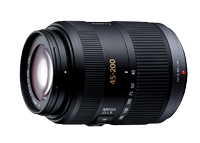Text begins from here.

 |
A variety of lens technologies are used to create sharp, clear images. The one used to reduce flare and ghosts is called coating technology. A thin coating is vacuum deposited onto the surface of the lens to reduce the amount of light that reflects off the lens surface or inside the lens, and to increase the amount of light passing through the lens. |
The surface of a coated lens appears to sparkle with a range of colors, including red, green and blue. Color differences depend on the color characteristics of the materials vacuum deposited onto the lens. When a variety of coating materials are applied in a series of layers, the term "multi-coating" is used. High-level coating technology uses anti-glare coatings optimized for a range of light wavelengths. In addition to increasing light transmittance and reducing reflections, these coatings also perform the very important job of controlling color rendition. |
|
|
Uncoated lenses produce a large amount of reflected light, both from the lens surface and from inside the lens, which reduces the amount of transmitted light and can cause image-damaging flare and ghosts. In comparison, coated lenses have improved light transmittance and a reduced amount of image-damaging reflected light. These lenses produce clear images. |
||
|
When a lens is pointed at a strong light source and white light seems to cover part or all of the lens, the effect is called "flare." Lens coatings help reduce this problem, even when using backlighting. |
|||||||||
|
Glass quality also affects lens performance. |

LUMIX G VARIO 45-200mm / F4.0-5.6 / MEGA O.I.S.
Lens Construction: 16 elements in 13 groups (3 ED lenses) |
Naturally, since the light passes through the lens, the glass quality and raw materials of the lens are extremely important. For example, in telephoto lenses the amount of chromatic aberration can be large, and color shifts and loss of sharpness can easily occur. These problems, however, are dramatically reduced in an ED (extra-low dispersion) lens. This type of lens, also called an "APO" (apochromatic) lens, is synonymous with high-performance telephoto lenses. |




